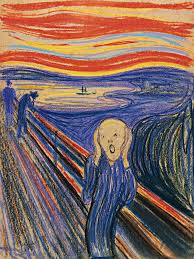Classical Blog
Classical Blog
Revolution and Art-1700s
Hannah Brooks
First Artist
John Singleton Copley: John Singleton Copley was a renowned artist in the 1700s. The paintings he created were very prevalent during many of the revolutions that occurred during the 1700s. His work was very important in the ties between art and revolutions. He was born in Boston in 1738. While growing up in Boston, he trained in the visual arts under the guidance of his father.
The work that I chose by John Singleton Copley was his painting of "Watson and the Shark."
Second Artist: John Trumbull
John Trumbull is a very prominent artist for his revolutionary paintings. He has a history of depicting the famous battles during the Revolutionary period through his artwork.
Work of Art:
The Death of General Warren at the Battle of Bunker Hill by John Trumbull
He used oil painting for this which accounts for the rich color that is shown in this painting. The way he painted it creates depth and drama that highlights the emotion of the scene. There is a light highlighting the main figure as he lies down defeated in his final battle. Realism is highlighted in this painting which reminds people these were real people. This also causes people to have stronger emotional responses. This emotion-filled response creates a stronger leap for people to care about the message he is spreading. I personally like the painting techniques he used for this. I wouldn't necessarily like the idea of hanging up a battle around my house, however for the purpose he created this, I think it is beautiful and well done.
Third Artist: Jacques Louis-David. He is a very famous artist of the neoclassical art period. He was a French painter during the classical period.
"The Death of Marat" was painted by Jacques-Louis David. This painting portrays the assassination of Jean-Paul Marat. He was a prominent revolutionary figure. Marat is depicted lifeless in a bathtub and seems to have a writing utensil in his hand and paper in his hand. Even in his death, he is to be seen spreading a powerful message. This is a very dramatic depiction that evokes a very emotive response. This is dramatic and dark in the composition of the painting. Marat is portrayed as a martyr in this and elevates the idea of justice and equality that America was fighting for. He is the symbol in this painting. He stands for the struggle and justice that the revolution is fighting for. This also shows that Marat was a significant loss for their movement. This also served as inspiration for the cause to continue.
The art elements in this piece are beautifully done and highlight and support the art. The arrangement directs your eyes to Marat's body immediately. The lines in his posture create a dramatic appeal and immediately bring your eyes to his body. Highlighting Marat's body makes sure the viewer is focused on the subject at hand. The supporting elements of the pen and paper also highlight and remind the cause of Marat's death. The color David uses with muted tones creates an element of sadness. There is Chiaroscuro which is light and shadow that is created around Marats dead body. There is texture as well with the rough bath and contrasting that with Marat's skin being smooth. This painting is a huge reminder of the immense loss that was felt by Marat's death. I think this though it was a sad story for a painting, it was created in a way that artistically was done very well.
The death of general Warren at the Battle of Bunker’s Hill, 17 June, 1775 – Works – Museum of Fine Arts, Boston. (n.d.). https://collections.mfa.org/objects/34260/the-death-of-general-warren-at-the-battle-of-bunkers-hill?ctx=8d90315c-5370-4266-9cda-40c483ab6153&idx=0
Watson and the shark. John Singleton Copley, Watson and the Shark, 1778. (n.d.). https://www.nga.gov/collection/highlights/copley-watson-and-the-shark.html
Wikimedia Foundation. (2024a, July 13). The death of Marat. Wikipedia. https://en.wikipedia.org/wiki/The_Death_of_Marat
Wikimedia Foundation. (2024, October 19). John Trumbull. Wikipedia.








You selected some excellent pieces to showcase the revolutions! I really appreciate your insights into Copley’s work; the symbolism is fascinating. I love how, In Trumbull’s Battle of Bunker Hill, the contrast of light and dark evokes the smoke and fire from the cannons. I found the inclusion of different flags a meaningful detail that highlights the various revolutions of the time. Your explanation of The Death of Marat was compelling, particularly in outlining his significance. I would have liked to hear more about his death. I probably should’ve known this, but I didn’t. I couldn’t determine if he had committed suicide or exactly how he died. Upon looking it up, I learned he had been stabbed to death, which explains the knife on the floor. This artwork is full of detail! Thank you for sharing these insightful pieces of history!
ReplyDelete